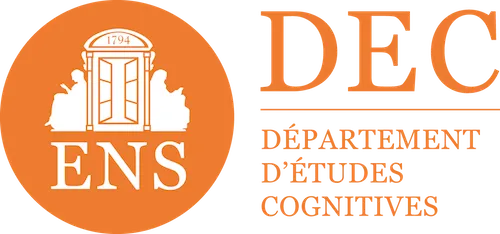

Integrating microlearning into the workflow: the practical guide
Training your teams without disrupting their daily activity: it's possible. Businesses lose an average of 40% of training time in logistics, travel and business interruptions. “Learning in the flow of work” reverses this logic by integrating learning directly into professional tasks. This guide provides you with concrete methodologies and actionable examples to transform your approach to training.
Learning in the flow of work: training when needed
Learning in the workflow breaks with traditional training that removes employees from their context. Instead of mobilizing your teams for hours in the classroom or in front of a screen, the microlearning fits naturally into their daily activities.
Concretely, what does that look like?
A salesperson has access to a 3-minute capsule on objection management just before his customer appointment. A technician consults a video procedure directly on site, tablet in hand. A manager follows a feedback module during his journey to an annual interview.
This approach is based on a principle neuroscientist solid: contextual anchoring. Learning when you need it multiplies knowledge retention by 3. The brain encodes information better when it is immediately applicable in a real situation.
4 steps to integrate microlearning into your workflows
1. Identify strategic learning moments
The first step is to map the “learning moments” in your career paths. These strategic moments are located where your employees need immediate information.
Here are the most effective trigger signals:
- First day of onboarding: access to essential information without overloading
- Before an important meeting: reminder of presentation techniques or negotiation
- After a recurring error: targeted training on the blocking point
- During a system update: a guide to using new features
- Job change or promotion: gradual support for new responsibilities
- Before using a complex tool: quick procedure accessible in context
To prioritize these moments, use a simple matrix: urgency of the task, complexity of the subject, and frequency of use. Situations with high urgency and medium complexity are ideal for contextual microlearning.
2. Choosing the right format for the context
Not all formats are the same depending on the context of use. Your choice must adapt to the learner's available time and to the intended educational objective.
Short video (30-90 seconds) : perfect for a technical procedure to follow step by step. The technician sees and reproduces the gesture immediately.
Interactive quiz (2-3 minutes) : ideal for verifying regulatory compliance or testing knowledge before critical action. Immediate feedback and correction in real time.
Interactive infographic : excellent for quickly summarizing a complex process or a checklist. Searchable at a glance, perfect for the field.
Short simulation : effective in driving decision making in a low risk environment. The learner is training with no real consequences.
Three criteria guide your selection: the time actually available, the complexity of the subject to be treated, and the educational objective (to understand, apply, or decide). If a salesperson has 2 minutes before an appointment, an interactive infographic on the key points of the pitch will be more effective than a long video or a detailed quiz.
3. Set up automatic triggers
Automating triggers ensures the relevance and adoption of the device. Four types of triggers cover all learning needs.
Time-based triggers : 7 days after onboarding to establish initial knowledge, or monthly reminder for safety procedures.
Event triggers : before the first use of a feature in the CRM, or when accessing a sensitive area of the system.
Behavioral triggers : after three similar errors in a process, signalling a need for targeted training.
Contextual triggers : when there is a change of position, team or area of responsibility.
Technical integration into your business tools (HRIS, CRM, Slack, Teams) is crucial. The xAPI and LTI standards allow this seamless connection. The learner accesses the content without changing the application, directly in their usual work environment.
One point of attention: make sure that automation does not become intrusive or generate unnecessary requests. It is recommended to test triggers on a restricted area before a large deployment, in order to adjust the frequency and relevance of notifications.
4. Measuring impact without disrupting
The KPIs of microlearning in the flow differ from traditional training metrics. You need to measure efficiency without adding friction.
Immediate completion rate : percentage of modules viewed within 5 minutes after triggering. A good rate is above 75%.
Correlation with business performance : evolution of operational indicators after training (error rate, processing time, customer satisfaction).
Transfer rate in real life situations : concrete application of apprenticeships within 48 hours. The xAPI standard allows this precise tracking.
Average consultation time : indicator of the engagement and relevance of the content. A 3-minute module viewed in 2min30 indicates a good fit.
The xAPI standard excels at tracking these informal learning and correlating training data with your business results. This way you calculate the real ROI, not just the completion rate.
5 potential sectoral use cases
Banking and insurance
Regulatory capsules are automatically triggered when sensitive files are processed. An advisor receiving an atypical credit application instantly accesses a 3-minute module on fraud detection.
Commerce and retail
Just-in-time product training is transforming the sales experience. A 2-minute sales pitch, which can be consulted between two customers on mobile, allows you to master new features without mobilizing the back office team. The conversion rate for new products increases from the first week.
Industry and logistics
Safety and maintenance procedures become accessible in the field via tablet. A 90-second video about changing equipment, viewable directly on the machine, can reduce errors and speed up interventions. The technician applies immediately without returning to the office.
Services and consulting
Soft skills training is a natural part of the job. A 4-minute feedback module before an annual interview, or a conflict management capsule before a difficult meeting, prepares the manager for the critical moment. The application is immediate and the anchoring is maximum.
Health
Health protocol updates are consulted between two patients. A 4-minute module on a new treatment, accessible from the computerized patient record, allows the practitioner to train without leaving his work environment. The safety of care is improving without disrupting schedules.
The 3 mistakes you should absolutely avoid
Mistake 1: Recycle long-form content by cutting
Dividing a 2-hour course into 5-minute slices creates frustration and kills pedagogical coherence. Microlearning in flow requires content designed from the start to be autonomous, complete and immediately actionable. Each module must meet a specific need without depending on a previous context.
Mistake 2: Overlooking the mobile experience
70% of consultations take place on a smartphone. Text that is too small, heavy videos that don't load, complex navigation: these UX problems kill adoption in a few days. The interface must be designed “mobile-first” with loading times under 3 seconds and intuitive navigation in one hand.
Mistake 3: Bombing teams with notifications
Over-solicitation causes rapid disengagement. Even with relevant content, receiving 5 notifications per day is annoying. The golden rule: maximum 2-3 learning moments per week, with absolute relevance. The quality of targeting takes precedence over the quantity of content offered.
Choosing the right tools for success
An LMS platform that fits the workflow needs to meet five essential criteria to ensure adoption and efficiency.
Native mobile app : instant access without friction, offline if necessary, optimized interface for quick consultation in a situation of mobility.
Open APIs : One Open API allows seamless integration with your HRIS, CRM, and collaborative tools. The learner does not change the environment to train.
AI recommendation engine : automatic suggestion of the right content at the right time based on the user's profile, history and context.
Adaptive learning : personalization of the course according to the real needs detected, with automated spaced repetition to permanently anchor knowledge.
Easy creation for business experts : your employees must be able to quickly create relevant content without technical skills.
Les interoperability standards (xAPI, SCORM) guarantee integration into your existing ecosystem. They allow the precise tracking of informal learning and the correlation with your business indicators.
Didask meets these requirements with an approach based on cognitive science. The AI assistant makes it easy for your business experts to create optimized content. Adaptive learning automatically customizes the routes according to the needs detected. Native integrations allow deployment in your daily tools.
Training without interruption: the new normal
Microlearning in the workflow makes training a continuous and natural process. Three principles guarantee success: identifying strategic moments when the need is real, choosing formats adapted to the context of use, and measuring the impact on business performance.
This approach requires a cultural transformation where learning becomes an integral part of daily work.
Didask is supporting this transformation with its training platform. Educational AI, adaptive learning, and native integrations allow for rapid deployment and natural adoption by your teams.
Make an appointment directly with our eLearning experts for a demo or simply more information.












